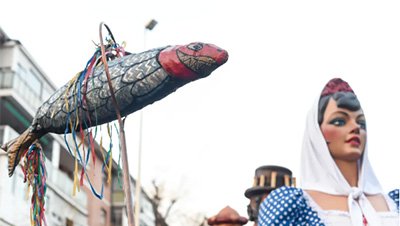El Consejo Local de Móstoles ha reanudado el tradicional desfile del «Funeral de Sardina» que marcará el final del Carnaval 2025. Las asociaciones y entidades interesadas en participar deben registrarse antes del 14 de febrero. El desfile se llevará a cabo el 5 de marzo y culminará con la quema simbólica de la sardina. Se invita a los participantes a vestirse acorde al tema y formar parte de la procesión fúnebre. La tradición del funeral de Sardina se remonta al siglo XVIII y se ha extendido a otras ciudades españolas y América Latina.
- El Consejo Local de Móstoles reanudó el desfile tradicional del «Funeral de Sardina» que Celebrará Ash el miércoles y puso fin al Carnaval 2025.
- Las asociaciones y entidades que deseen participar pueden registrarse antes del 14 de febrero inclusive.
El Consejo Municipal de Móstoles, a través del Departamento de Educación y Holidays, se recupera, después de más de una década, sin organizarse, el desfile tradicional del «funeral de sardín» en Ash, que tendrá lugar este año el 5 de marzo.
The registration will be done by sending the completed registration document to the address of the edition at navess@steles.es until February 14, 2025 inclusive. The document can be downloaded from the following link:
A funeral procession, which will take place on the main streets of Centro Móstoles, will end its tour with the traditional and symbolic burning of the sardine preceded by the proclamation of the funeral. After days of frenetic disguise and publicity, it’s time to usher in the carnival with the Sardine funeral, the moment when Guasa and Chirigota fall silent and the gravity of the occasion is acknowledged.
The procession will be led by a large sardine figure in a funeral procession, with traditional plaques and accompanied by musical and parade animation.
Entities and associations that are registered can participate with the aforementioned funeral procession, and if they wish, they can also bring their own sardine to be burned. Those accompanying the sardine in the parade must be dressed according to the theme, forming a large group.
The Origin of the Sardine Funeral
According to popular legend, passed down through generations, the origin of this tradition dates back to the 18th century, particularly to a section of sardines commanded by King Carlos III in 1768. The spirit was to spread the word that the king, fearing for the health of his population, had to order the burial of all rotten sardines on the banks of the Manzanares River. The joyful brotherhood of the Sardine Funeral in Madrid continues today, holding this symbolic funeral at the fountain of the little birds in Casa del Campo, as it is said to be where the sardines were buried.
According to other historians, this event is related to Jerónimo Grimaldi, one of the last servants of King Carlos III, who had a fondness for «El Sardina» of a thin end. It seems that Grimaldi left the city of Madrid on the eve of the funeral and Madrid decided to bid farewell with a grand masquerade.
Regardless of the version of this tradition, everything indicates that it originated in Madrid, the capital of Spain, and spread to other Spanish cities and even to Latin America, where it is also celebrated.
FUENTE




